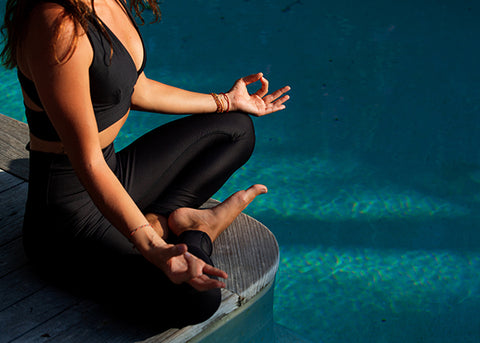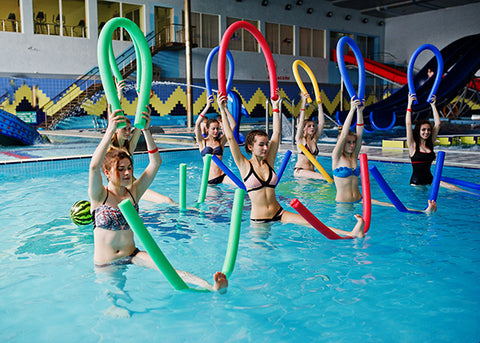Water yoga: a refreshing twist on traditional yoga practices
Aquatic yoga is a form of yoga that is practiced in water, usually in a swimming pool, which is ideal for adding a refreshing twist to traditional yoga practices. This doesn't mean simply doing yoga while floating in water but making water a key element of the practice itself. Indeed, water offers resistance and support, making yoga poses more challenging and at the same time more accessible.
Throughout this article, we will jointly explore the origins of water yoga, the difference between water yoga and traditional yoga, the benefits of water yoga, how to get started with water yoga, some basic poses to try, and the equipment you need. I hope you will join me in this refreshing adventure!
The origins of Aquatic Yoga
Aquatic yoga has deep roots dating back thousands of years, when ancient Indian yogis practiced meditation and asanas (yoga postures) along sacred rivers. Over time, this practice has evolved and spread throughout the world, adapting to different cultures and environments. Today, water yoga is a popular and respected form of yoga, practiced in pools, lakes, and even oceans around the world.
The modern practice of water yoga has been greatly influenced by the work of BKS Iyengar, a famous Indian yogi and yoga teacher. Iyengar is known for developing a method of yoga that emphasizes precise body alignment and the use of gear such as straps, blocks, and blankets to help students achieve the poses correctly.
The difference between Aquatic Yoga and Traditional Yoga

The main difference between water yoga and traditional yoga is, of course, the water element. In water yoga, as we mentioned earlier, water provides resistance and support, making yoga poses both more challenging and more accessible. This can be especially helpful for people with physical limitations or those recovering from injury. Another important difference is the temperature. While traditional yoga is usually practiced in a heated room, aquatic yoga is practiced in room temperature water. This can make water yoga sessions more relaxing and refreshing, especially during the summer months.
Benefits of Aquatic Yoga
Water yoga offers a number of unique benefits. First of all, water provides a low-impact environment that's kind on your joints. This can be especially helpful for people with arthritis or other conditions that cause joint pain. Plus, the water provides resistance but also supports your body weight, helping you build strength and experiment with yoga poses that might be too challenging on dry land.
Start practicing Aquatic Yoga

To get started with aquatic yoga, you'll need a swimming pool, but if that's not possible, you may be able to find an aquatic yoga class at a local fitness center or spa. It's important to note that you don't need to know how to swim to practice aquatic yoga. In fact, many positions can be done while standing in shallow water, and tools such as pool noodles can provide additional support.
Basic positions of Aquatic Yoga to try
There are many water yoga poses you can try, but some of the more common include:
- The Warrior: This is a classic yoga position that can easily be adapted to the water. Standing in shallow water, spread your legs and rotate one foot 90 degrees. Extend your arms out to the side and look over your front hand. Hold the position for several breaths, then switch sides.
- The Tree: This is another classic yoga position that works well in the water. Standing in shallow water, bend one knee and bring the ball of one foot to the inside of the opposite thigh. Join your hands in prayer in the center of your chest and hold your balance for several breaths.
Position of Aquatic Yoga to improve circulation in the legs

One water yoga pose that is particularly useful for improving circulation in the legs is the eagle pose. Standing in shallow water, cross one leg over the other and hook the foot behind the opposite ankle if possible. Also cross your arms in front of your chest, with one elbow over the other and hands together. Hold the position for several breaths, then switch sides.
Necessary equipment for Aquatic Yoga
To practice aquatic yoga, you will need a comfortable swimsuit and a pair of water aerobics shoes to protect your feet. You may also want to consider using equipment like pool spaghetti or water aerobics weights to add support and resistance.

Leave a comment